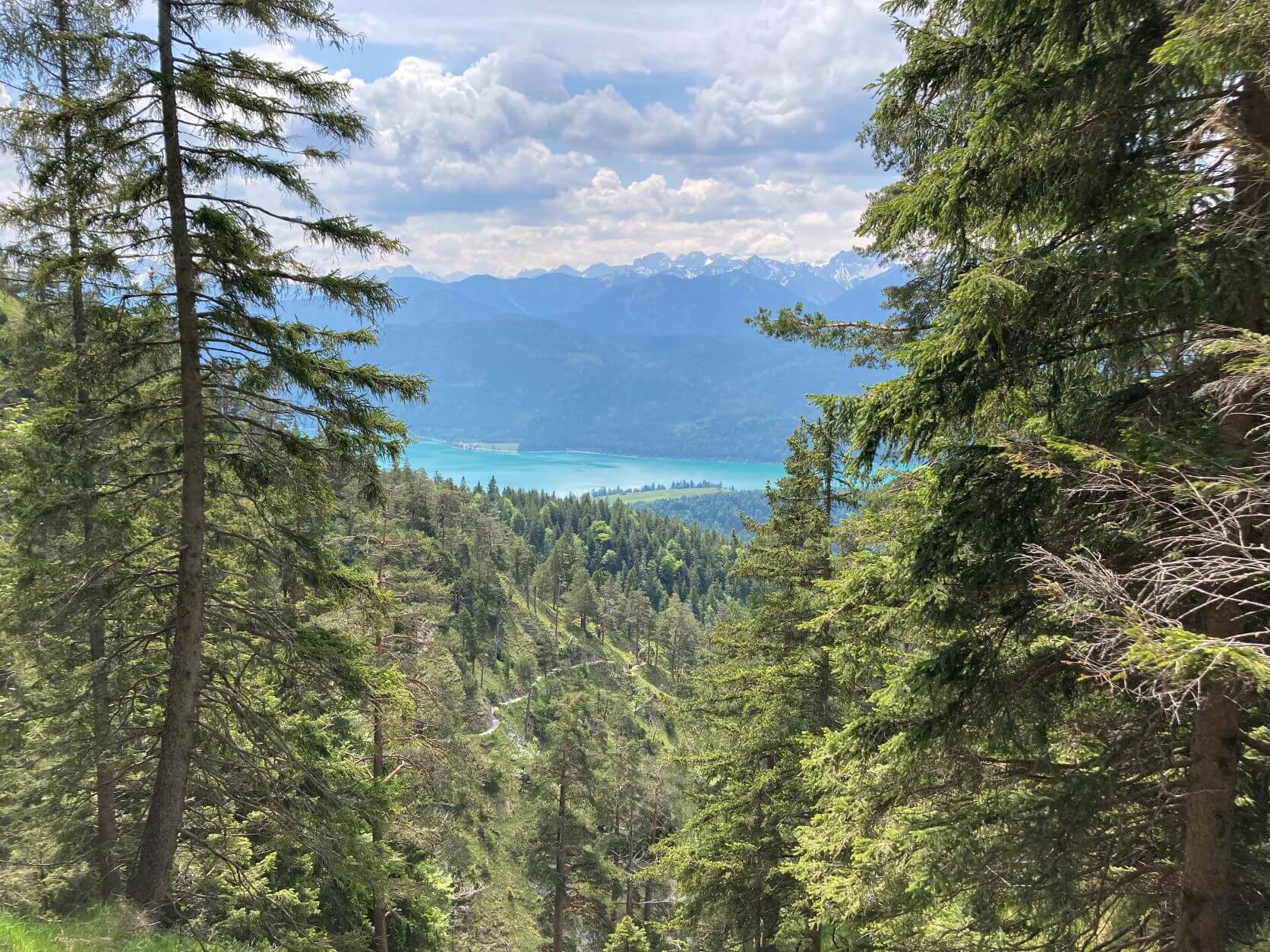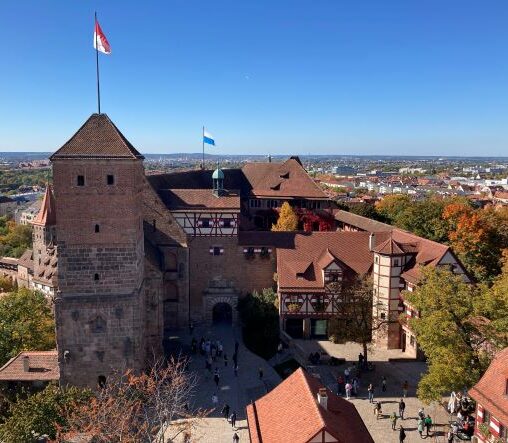
Facts
Name of the city: Nuremberg (German: Nürnberg)
Location: Franconia, Bavaria, Germany
Population: 518,365
Next international airport: Nürnberg Airport (NUE)
Next airport flying to Asia: Frankfurt Airport (FRA), Munich Airport (MUC)
The main attraction of Nuremberg is for sure the Imperial Castle. There are so many reasons to visit the city. It offers a variety of great attractions. Read the blog post about Nuermberg’s main attractions. The Imperial Castle is the landmark of the city. Wherever you look up you likely see it on the horizon.
The Imperial Castle is known as the Kaiserburg in German langugage. In the following, you will read about the history of the landmark, how to visit, what to see including some hidden-gems.
Nuremberg introduction
The history of Nuremberg is long. It was home to Europe’s first printing press. Further, it was a center of astronomic studies. In 1543 Nicolaus Copernicus published famous works. The city is stuffed with architectural wonders. Famous artists were attracted to the city, for example Albrecht Dürer was born in Nuremberg. The old center of Nuremberg is characterized by timber-framed houses coupled with traditional markets.
Imperial Castle of Nuremberg
The Imperial Castle is the landmark of Nuremberg. The Imperial Castle dominates the city’s silhouette since the Middle Ages. It is known as one of European’s most formidable medieval buildings.
The Imperial Castle can be divided into three sections. The Castle itself, known as the Kaiserburg, the Burgraves’ Castle (so called Burggrafenburg) as well as the buildings located at the eastern site of the Imperial City, the Reichsstädtische Bauten. Most tourists stay in the area around the Imperial Castle. The Heavenly Gate, Hasenburg Tower, Sinwell Tower, Deep Well, Castellan’s House, Inner Gate, Imperial Chapel, Heathens’ Tower and Palas are part of the Imperial Castle. The Burgraves’ Castle was situated between the Sinwell Tower and the Luginsland. The Bastions were built in 1538 – 1545 and are part of the Imperial City. Today, it is renovated and is now a Youth Hostel.


How to get to the Imperial Castle
The location of the Imperial Castle is in the city center. It can be easily reached by public transportation.
Take Tram 4 to Tiergärtnertorplatz stop, bus no. 36 to Burgstraße stop or the underground and exit at Lorenzkirche stop. As no parking spots for visitors are available, I recommend travelling with public transport.
See the map of the Castle for detailed information. All attractions located in the area of the Imperial Castle are marked.
Entrance fees
Several ticket options are available. Please see below table for detailed information (as of October 2022).
| Combination ticket | Palas with Double Chapel and Imperial Castle Museum | Deep Well and Sinnwell Tower | Castle Gardens | Combination ticket of Imperial Castle and Cadolzburg Castle near Fuerth |
| EUR 7.00 (reduced EUR 6.00) | EUR 5.50 (reduced EUR 4.50) | EUR 3.50 (reduced EUR 2.50) | No fee | EUR 12.00 (reduced EUR 10.00) |
I have chosen the combination ticket to see all attractions of the Imperial Castle. It offers a great value and you can enjoy all varieties of the castle.
Opening hours of the Imperial Castle
You can visit the Imperial Castle during the following times:
April to October 3rd: daily 9:00 am – 6:00 pm
October 4th to March: daily 10:00 am – 4:00 pm
Closed on public holidays (January 1st, Shrove Tuesday, December 24th, 25th, 31st)
The Castle Gardens are open for you from April 15th to October from 8:00 am to nightfall (latest 8:00 pm
The Maria Sibylla Merian Garden has special opening hours. It is open on Sunday and Monday only.
April to September: 2:00 pm – 6:00 pm
October: 2:00 pm – 4:00 pm
November to March: closed
History of the Imperial Castle
The symbol of Nuremberg is the Imperial Castle. The silhouette represents the city since the Middle Ages. It shows the power and importance of the Holy Roman Empire. Further, it gives us an indication of the outstanding role of the city. The city of Nuremberg was first mentioned as a royal property in 1050. Back in the times of Salian and Hohenstaufen kings and emperors the castle was a stopping place for rulers on their journey. Over the remains of older buildings, the Hohenstaufens built an extended castle complex. This complex is largely what we see today.

Thanks to its close connection to royalty and important highways, Nuremberg developed to a transit trade and export center. Emperor Friedrich II issued the Letter of Freedom in 1219 and granted the city civic autonomy. The Hohenstaufen period ended in 1254, by that time the city had become independent.
During the late Middle Ages the city of Nuremberg became one of the centers of the empire. At those time the kings were elected in Frankfurt and crowned in Aachen.
Style and preservation
The monarchy ended in 1918. It was believed to replace the neo-Gothic interior with timeless German styles. Practically, the entire Imperial Castle lay in ruins in 1945. Fortunate, important late Gothic and Romanesque sections survived. The complex was rebuilt almost exactly as before.
Visit the permanent exhibition in the castle to see not only pictures of the conservation time, but also explanations of the castle’s elements and functions in historical context.
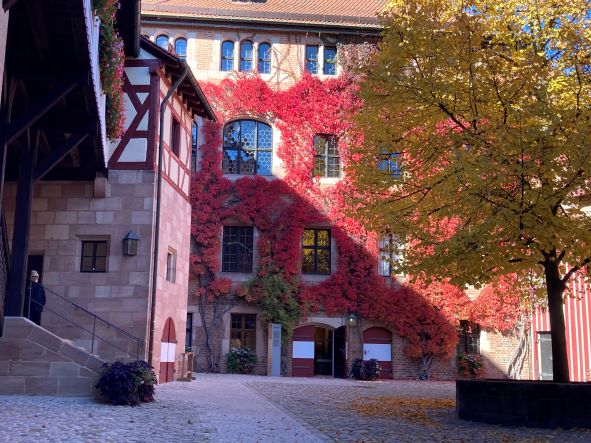

Sinwell Tower
You find the Sinwell Tower at the east end of the bailey. It was created in the second half of the 13th century. Inside the Sinwell Tower you can explore exhibition of photos of the history of the Sinwell Tower. The name of the Tower origins in its cylindrical form. Sinwell means “extremely round” in German language.
Thanks to the Tower’s height, attackers could be seen quickly. Therefore, the purpose of the Sinwell Tower was for defence and for status.
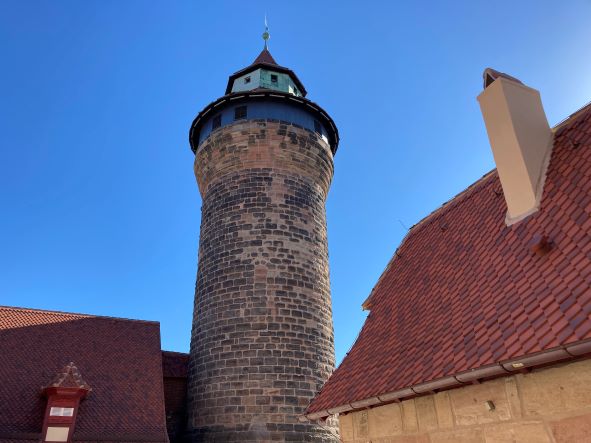
Climb up the Sinwell Tower’s winding wooden staircase to enjoy one of the best views of Nuremberg. The vantage point offers an impressive 360-degree view. Do not miss this great viewpoint!
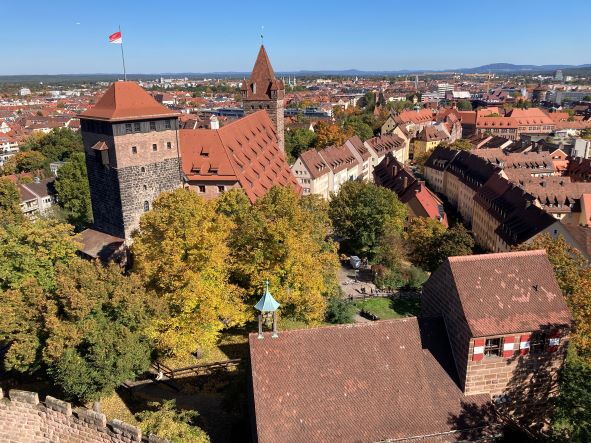
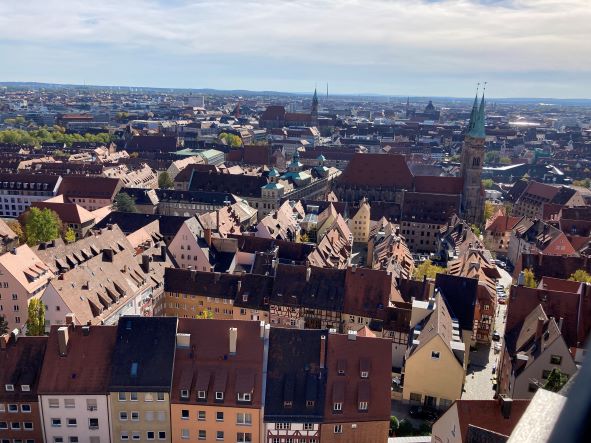
Deep Well
The Deep Well dates back to 1563 and is a two-storey building. It was renewed in 1951. The half-timbered storey is especially beautiful. The history of the Deep Well is a mystery. Historics estimates that the building is one of the oldest parts of the castle. The well goes 50 meter deep.


aioutravel tip:
Plan your visit of the Deep Well according to its demonstration times. You can experience how long it takes for the water to go down the well.
Knight’s Hall
In the large hall on the lower floor, you find the Knight’s Hall. It is the first room you enter if you follow the recommended visit route. Imagine that the emperor received delegations, welcomed important people, and regulated legal topics in this hall.
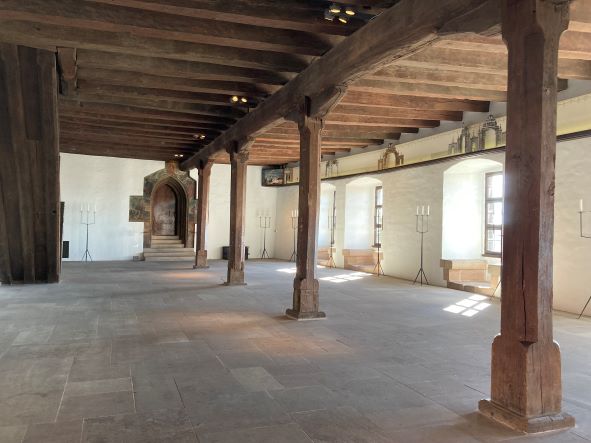
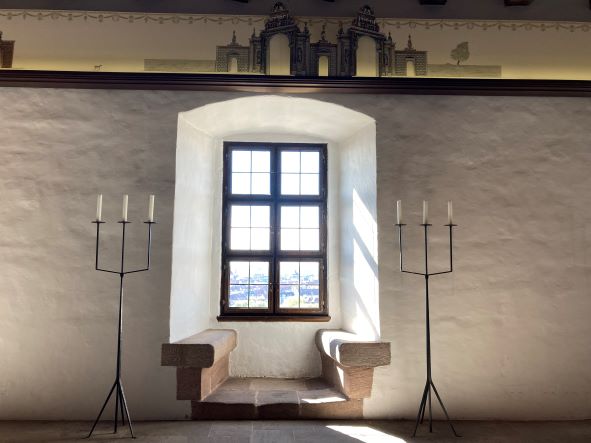
The Knight’s Hall looks like during the times of Emperor Friedrich III (in 1471). Walk to the window wall and see the spectacular view towards the city.


Today, the Knight’s Hall is being used as an event hall for weddings, birthdays or banquets.
Corner Chamber
Are you ready for the imperial crown jewels, paintings and gifts presented to the emperor? All those and many more can be visited in the Corner Chamber. The artworks of famous Nuremberg artist can be visited.
My personal highlight were for sure the brilliant crown jewels.
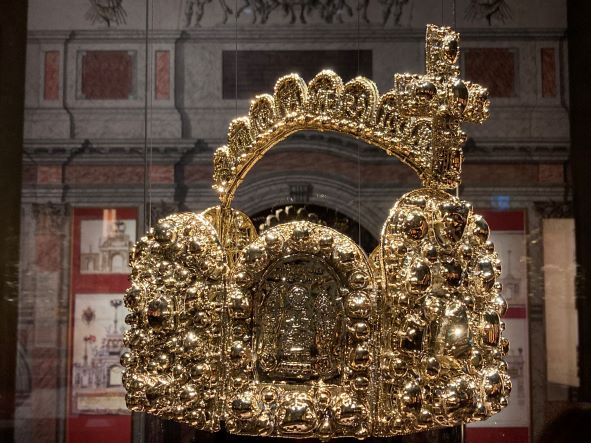
Double Chapel
The Double Chapel is one of the most important parts of the castle with respect to the historical and artistic points. The Double Chapel consist of the two chapels: the Imperial Chapel and St Margaret’s Chapel. Both have the same ground plan and are connected through an opening in the middle. This means that the service held in one chapel can be heard in the other.

aioutravel tip:
For a great vantage point and also a good photo-spot, climb up the gallery above. This gallery is accessible by some stairs. In previous times, the gallery permitted distance from the emperor to the court.
Castle Gardens
Already in the 15th century, hanging gardens were located in the Castle Garden area. Fruit trees, flowers and vines were located on the south side of the Castle. The Castle Gardens of previous times have not been preserved.
Stroll around in the Castle Garden area. Pass by the plants and find yourself in the upper bastion. Walk through winding paths, explore sculptures made of sandstone and quietness in the garden.
No ticket is needed to visit the garden.
Opening hours:
April 15th – October: 8:00 am – nightfall
November – April 14th: closed

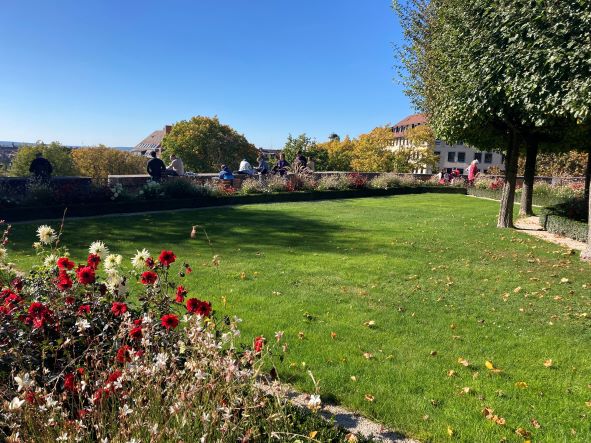
aioutravel tip:
The Castle Gardens are hidden in the back of the Imperial Castle. Even though they are tricky to find, it is worth to escape from the crowds. Stroll around, enjoy the flowers and plants as well as the peaceful oasis in the middle of the city.
My favorite viewpoint and photo spot at the Imperial Castle
After enjoying the peaceful garden walk towards the Castle Walls. They are accessible from the gardens. The covered walkway is my personal favorite place to enjoy the view towards the Tiergärtnertor square and Albrecht Dürer House. The lovely viewpoint is a fantastic photo spot as well.


Maria Sibylla Merian Garden
You will find the Maria Sibylla Merian Garden between the Heidenturm and the Himmelsstallung. The small garden is protected by framing walls with a beautiful view to the city. The garden is named after the famous artist Maria Sibylla Merian (1647-1717). She worked in the city for 14 years. She used the garden for her studies of flowers and insects.
The garden you are visiting today has been created in 2013. It is divided into a square and path area. The plats you see in the garden are also published in the books from Maria Sibylla Merian.

No ticket is needed to visit the garden.
Opening hours:
April – September: 2:00 pm – 6:00 om
October: 2:00 pm – 4:00 pm
November – March: closed
Overnight Stay in the Castle
Would you like to feel like a royalty, or rather like a royalty’s horse? The historical imperial stables are home of a modern youth hostel. The Jugendherberge Nürnberg opened in 2013 is fully equipped. It is rated as fabulous with 8.7 points.
Jugendherberge Nürnberg – Youth Hostel | 8.7 | €
Address: Burg 2, Mitte, 90403 Nuremberg, Germany
Summary of preparations for your visit of the Imperial Castle
Do not forget that you walk uphill to see the Imperial Castle. It is a pretty steep walk, so better bring comfortable shoes and enough water specially on sunny days.

Consider the opening hours of the Castle Gardens while planning your visit of the Imperial Castle. As described above, the Maria Sibylla Merian Garden is only open on certain days. Try to coordinate your visit accordingly.
Further, plan your visit of the Deep Well with its demonstration time. A little demonstration is offered once an hour. Do not miss it.
Last but not least, with the Nuremberg Card you can save money! The Imperial Castle is part of Nuremberg Card’s attractions. It makes financial sense to get such a card if you plan to visit many attractions around Nuremberg.
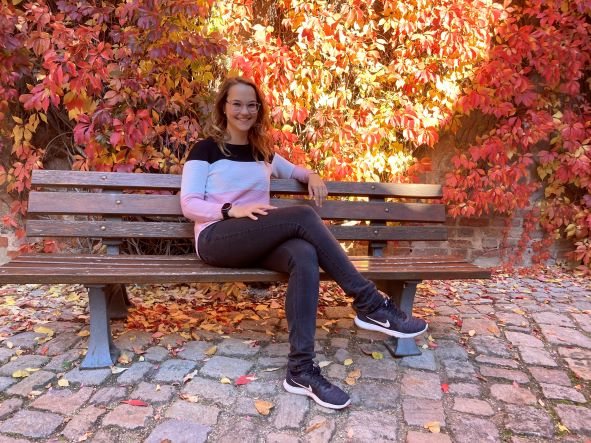

Attractions close to the Imperial Castle
The Imperial Castle is close to the city center. After walking down the hill from the Imperial Castle, you probably head directly to the Main Market (Hauptmarkt). In this area you find the Old Town Hall and baroque church. At this place the tourist information center is located as well. Many attractions such as the special fountain, the church of our lady, the medieval dungeouns are located just a stone throw away. Read more about Nuremberg’s attractions.
More Beautiful Castles in Germany
Are you attracted by the beautiful castles? Germany offers a lot of magnificent castles in different styles. See the report about Castles in and around Munich for more information.
Have you visited the Imperial Castle of Nuremberg?
Which places did you enjoy the most? Do you have any insider tips or maybe a question about the journey? Just leave a comment. I am looking forward to it.
If you decided to stay at one of the places described, I would love to hear your feedback after your stay.
